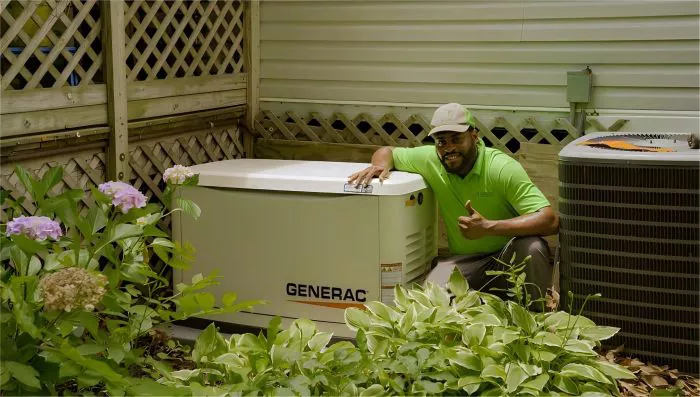Removing air from a diesel generator’s fuel system is a critical maintenance procedure to ensure the engine operates efficiently and reliably. Air trapped in the fuel system can lead to starting difficulties, engine misfires, or decreased performance. This guide provides a detailed walkthrough of the process for removing air from a diesel generator, ensuring smooth operation and longevity of the equipment.
1. Preparation
1.1 Gather Required Tools and Supplies
Tools and Supplies:
Wrenches and Screwdrivers: Essential for accessing and adjusting various components of the fuel system. Ensure you have a range of sizes to handle different fittings.
Fuel Pump Primer: This tool is used to manually prime the fuel system, removing air pockets. It’s often found as a manual pump or lever on the generator.
Clean Rags or Towels: Use these to clean up any spills or drips that may occur during the procedure. Keep the area tidy to avoid contamination.
New Fuel Filter (if required): Have a replacement fuel filter available in case the existing one is clogged or dirty. A clean filter is crucial for optimal fuel flow.
1.2 Safety Precautions
Safety Precautions:
Turn Off the Generator: Ensure the generator is powered off and allowed to cool before performing any maintenance. This prevents electrical hazards and overheating.
Work in a Well-Ventilated Area: Diesel fuel vapors can be harmful if inhaled. Perform maintenance in an area with good airflow to disperse any fumes.
Avoid Open Flames: Keep any sources of ignition, such as open flames or sparks, away from the work area to prevent the risk of fire.
Wear Safety Gear: Use protective gloves and safety goggles to shield yourself from fuel splashes and other potential hazards.
2. Locate Fuel System Components
2.1 Identify the Fuel Tank and Fuel Lines
Fuel Tank and Fuel Lines: Locate the diesel fuel tank and the associated fuel lines that transport diesel from the tank to the engine. Understanding these components is essential for effectively removing air from the system.
2.2 Find the Fuel Pump Primer
Fuel Pump Primer: The fuel pump primer is typically a manual pump or lever used to purge air from the fuel system. Consult the generator’s manual for the exact location of the primer on your specific model.
3. Removing Air from the Fuel System
3.1 Turn Off the Generator
Turn Off the Generator: Ensure the generator is completely turned off before starting the procedure. This step is crucial for safety and to avoid accidental starting during maintenance.
3.2 Inspect the Fuel Filter
Inspect the Fuel Filter: Check the fuel filter for any signs of clogging or dirt. A dirty filter can obstruct fuel flow and contribute to air being trapped. If necessary, replace the filter with a new one following the manufacturer’s recommendations.
3.3 Use the Fuel Pump Primer
Use the Fuel Pump Primer: Engage the fuel pump primer to manually pump fuel through the system. This action helps to expel trapped air. Pump the primer slowly and steadily until you feel resistance, indicating that the system is pressurized and air is being removed.
3.4 Open the Bleed Valve
Open the Bleed Valve: Locate the bleed valve, which is usually found on the fuel filter or fuel pump. Open the valve slightly using a wrench or screwdriver. Allow diesel fuel to flow out until you observe a steady stream without air bubbles. This step ensures that any remaining air in the system is expelled.
3.5 Close the Bleed Valve
Close the Bleed Valve: Once you see a continuous flow of fuel without bubbles, securely close the bleed valve. Tighten the valve properly to prevent any fuel leaks.
see also: How to Turn a Diesel Engine into a Generator?
4. Restart the Generator
4.1 Start the Generator
Start the Generator: Turn on the generator following the manufacturer’s instructions. Observe the engine carefully as it starts to ensure smooth operation without hesitation or misfires.
4.2 Monitor Engine Performance
Monitor Engine Performance: Pay attention to the engine’s performance during startup. Listen for any unusual noises or vibrations that may indicate air is still present. Ensure the engine runs smoothly and efficiently.
4.3 Check for Leaks
Check for Leaks: Inspect all components of the fuel system, including the fuel lines, bleed valve, and connections, for any signs of fuel leaks. Address any leaks immediately to prevent wastage and potential safety hazards.
5. Final Checks
5.1 Clean Up
Clean Up: Wipe away any spilled fuel and clean the work area with rags or towels. Properly dispose of any waste materials and ensure all tools and supplies are returned to their designated places.
5.2 Document Maintenance
Document Maintenance: Record the maintenance performed in the generator’s logbook. Include details such as the date, procedures completed, and any observations. This documentation helps track the generator’s maintenance history and identify any recurring issues.
Conclusion
Removing air from a diesel generator’s fuel system is essential for maintaining optimal performance and reliability. By following the steps outlined—gathering the necessary tools, locating and inspecting components, removing air from the system, restarting the generator, and performing final checks—you can ensure that your diesel generator operates smoothly and efficiently. Regular maintenance and attention to the fuel system will help extend the lifespan of your generator and ensure dependable performance when needed.
Related topics:
- How to Make a Diesel Generator?
- How Much to Rent a Diesel Generator?
- What Size Diesel Generator Would You Need to Run a House?

